Fun-Sized Follow-Ups
Top 10 Video Game SD Makeovers of All Time!
In some instances, SD is used to describe “standard definition” televisions and displays. When talking about memory cards, SD stands for “secure digital.” For the purpose of this countdown, however, SD refers to the “super-deformed” art style that’s widely used in Japanese media. This style (also known as chibi) typically depicts characters with enormous heads and small bodies, and it’s often used as a form of comic relief. The super-deformed gimmick was popularized by the aptly-titled SD Gundam in the 1980s, and the diminutive proportions were ideal for capsule toys and other merchandise. Countless video games employ SD designs, and this style worked especially well on low-resolution screens. This list deals with games and franchises that embraced an SD theme after their predecessors established themselves using more realistically proportioned characters. Instead of merely listing the games in order of how good they were, we’ll also try to take into consideration how impactful each SD makeover was. Bonus points will be awarded to games that embraced the comical aspects of the SD art style, and we’ll also be looking for games that were thematically different than their predecessors. Finally, it should be stressed that this focuses on video game franchises that were given SD makeovers, so we’ll avoid mentioning games based on existing properties. Sorry Super Robot Wars fans.
10
River City Ransom
1989
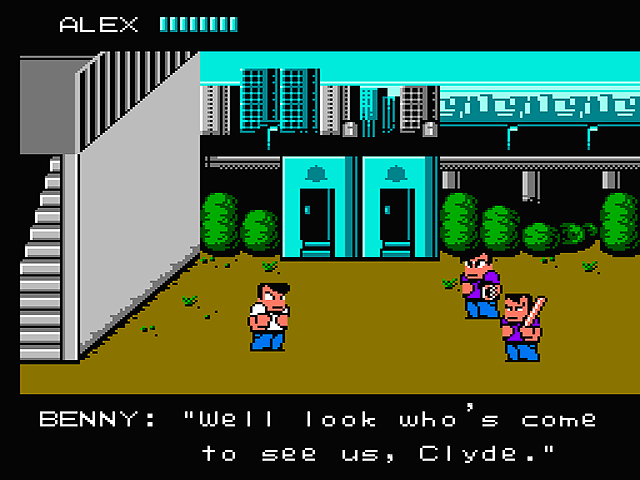
Renegade was a landmark beat ’em up from Technos that helped define an entire genre. It laid the foundation that games like Final Fight and Streets of Rage were built on. Renegade follows the exploits of a high school delinquent named Kunio who battles against relentless waves of street thugs in an effort to rescue his kidnapped girlfriend from a mob boss. The characters in the game had (relatively) realistic proportions, but Technos adopted a more comical art style for River City Ransom even though it was a direct sequel featuring many of the same characters. Their heads were enlarged, their limbs were shortened, and their necks were eliminated altogether. The super-deformed look was accompanied by hilarious animations and comical dialogue, and the game generally took itself less seriously than its predecessor. The new art style gave the developers license to be ridiculous, and the special moves wouldn’t have been out of place in a cartoon. Technos opted to use a more serious tone for the Double Dragon series, so I appreciate how they gave River City Ransom a unique look. I would have ranked it higher on this list, but the series underwent an incremental artstyle change. In between the release of Renegade and River City Ransom, Technos released Super Dodge Ball in the arcades and on the NES. Each release became increasingly more animated, and the shift to an SD art style was gradual. River City Ransom lacks the juxtaposition that this list is looking for, so I couldn’t justify ranking it higher on this countdown.
9
SD Valis
1989
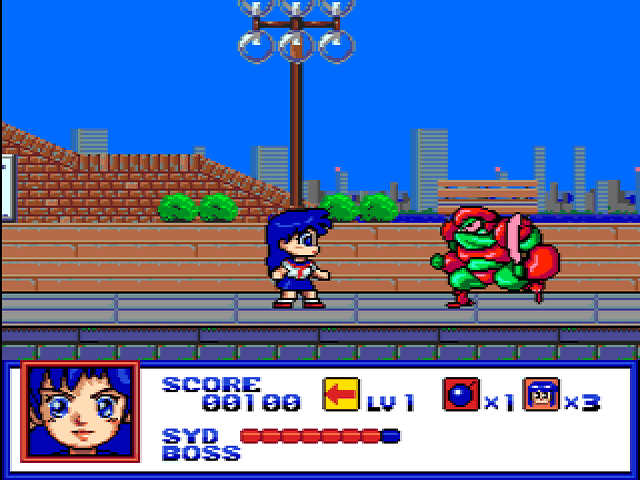
The Valis series centers around an ordinary high school student who is chosen to wield the legendary sword of Valis. Although the games didn’t make a huge impact on the industry, they helped usher in the use of cinematic cutscenes in games and were notable for featuring a female protagonist. Valis II was originally released on the TurboGrafx-CD and was ported to various Japanese computers. For some reason, Telenet decided to do something a little different for the Mega Drive port. SD Valis is basically exactly what it says on the tin. It features the same side-scrolling action of Valis II and it even follows the same plot, but the characters were presented in a super-deformed style. The new dialogue is just as silly as the character designs, so the game feels like a straight-up parody of Valis II. When SD Valis was released in America, it was renamed Syd of Valis, presumably because the “SD” designation wouldn’t have meant anything to the American audience at that point in time. (The heroine’s name was also changed from Yuko to Syd so that the game’s new title would make sense.) Syd of Valis is not a particularly good game, but it’s an interesting case study. Games that are ported to less-powerful platforms are sometimes given SD makeovers out of necessity, but there’s no reason why the Genesis couldn’t have run a proper version of Valis II. The first Valis was ported to the Genesis and so was Valis III, but the only version of Valis II that exists on the platform is an SD parody. Weird, right?
8
Guilty Gear Petit
2001
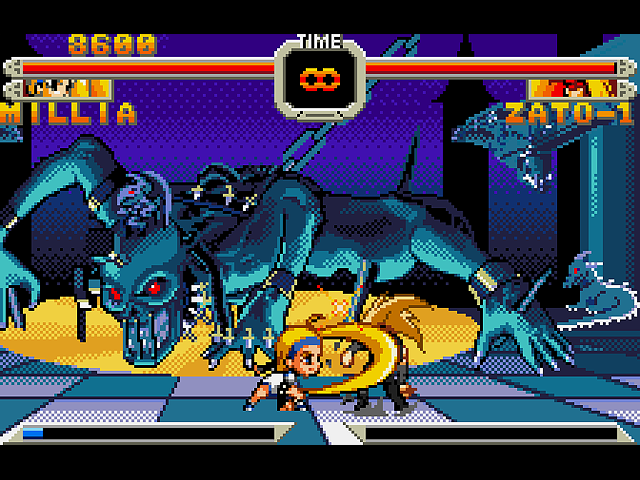
The Guilty Gear series has provided us with some of the best looking 2D fighting games ever, but the WonderSwan Color version was never going to impress us in the same way that its console-based predecessors did. The folks at Arc System Works obviously realized this, so they adopted a super-deformed artstyle for the first handheld Guilty Gear game. The idea of an SD fighting game had already been explored by the likes of Capcom and SNK, and the concept was a perfect fit for Guilty Gear. Even though the WonderSwan’s screen didn’t give developers a lot of real estate to work with, the characters in Guilty Gear Petit still have a lot of personality due to their unusually large heads. The game is considerably slower than other Guilty Gear games and there aren’t nearly as many moves, but the pacing is well-suited for a small screen. The characters never get lost in the background, and the action is easy to follow even though the animation is fairly limited. Guilty Gear Petit is a great companion to the console versions, and it feels like a unique experience rather than a watered down version of something we’ve already played. The characters are absolutely adorable, and my biggest gripe is that there are so few to choose from. Guilty Gear Petit 2 effectively doubled the roster when it arrived on the WonderSwan a mere eight months later, but we’re recognizing the original since it was more of an innovator.
7
Persona Q: Shadow of the Labyrinth
2014
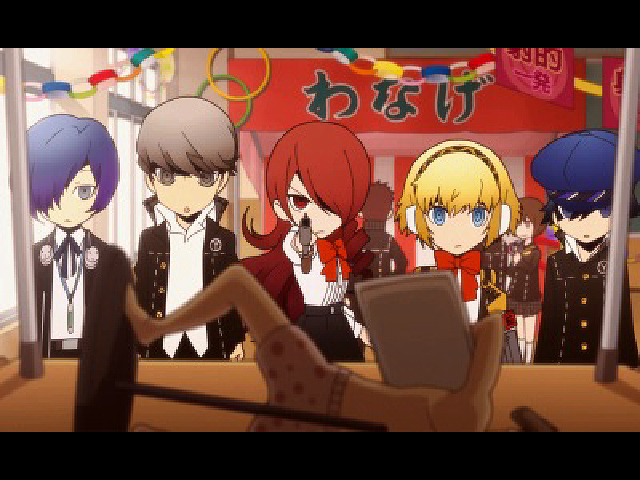
Released in 2014 for the Nintendo 3DS, Persona Q: Shadow of the Labyrinth was a crossover between Persona 3 and Persona 4 that featured characters from both games. Persona Q puts a heavier emphasis on dungeon crawling than the mainline Persona games do, however, and it’s more in line with the Etrian Odyssey series in this regard. The Etrian Odyssey influence can also be seen in the character designs. It’s hard for characters to convey emotion when they’re scaled down on a tiny 3DS screen, so the developers wisely decided to redesign them with a chibi art style. The abnormally large heads helped to accentuate facial expressions, and great care was taken to ensure that the SD versions retained the same visual traits that defined their non-SD counterparts. Although Persona Q borrows heavily from other games, it’s strong enough to stand on its own merit. It was written and directed by veterans of the Persona series, and the story is entirely new even though it’s focused on familiar characters. Persona Q was successful enough to warrant a direct sequel, and it’s nice to have yet another game franchise within the larger Megami Tensai universe.
6
King of Fighters R-1
1998
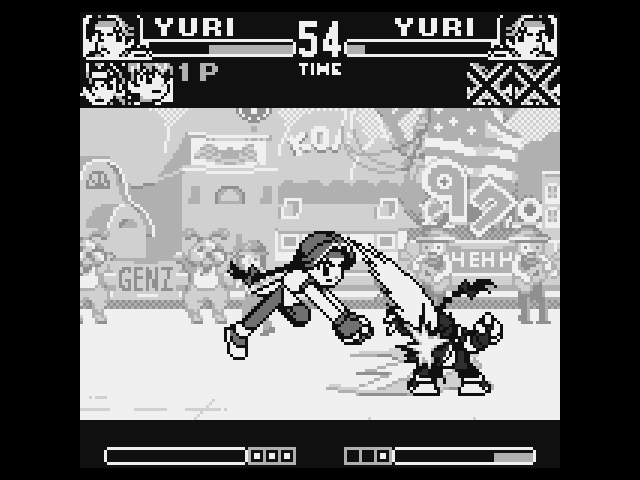
SNK employed some of the most talented pixel artists in the world in the 1990s. Their games were acclaimed for their silky-smooth animations, brilliant use of color, and high level of detail, and they showed a complete mastery over the Neo Geo hardware. The Neo Geo Pocket was a different animal altogether, however, and its 2.6″ monochromatic screen was simply not appropriate for the art style that SNK was known for. Takara ported many of SNKs most popular titles to the Game Boy throughout the 1990s, and they utilized SD designs for promotional materials and concept art. For some reason, the games themselves typically retained realistic proportions instead of fully embracing an SD motif. When the Neo Geo Pocket was released, SNK realized that it didn’t make sense for them to draw direct comparisons between their newly-minted console and their existing arcade hardware. On that note, King of Fighters R-1 fully embraced the SD theme, and the character’s heads were as big as their bodies. The characters were expressive despite the low resolution screen, and the game felt like its own thing rather than a poor facsimile of the arcade games. King of Fighters R-1 was given a direct sequel, and most of SNK’s Neo Geo Pocket ports used a similar art style. The SD art style defined the Neo Geo Pocket as we know it, and King of Fighters R-1 helped set the stage.
5
Splatterhouse: Wanpaku Graffiti
1989
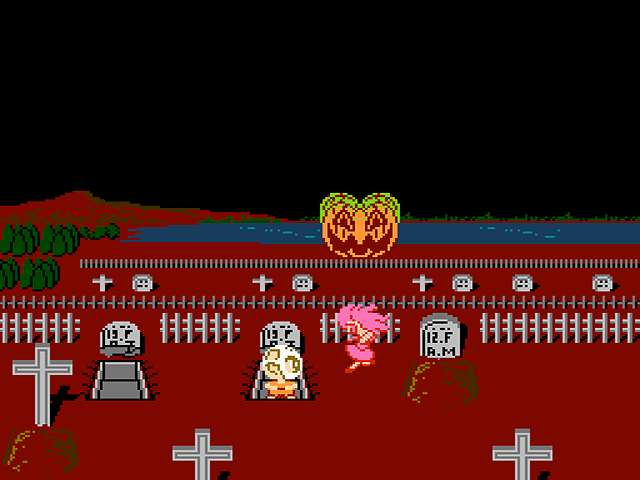
Splatterhouse was a gruesome beat ’em up that could be described as a celebration of 1980s slasher films. The game turned heads in the arcades, but it took nearly a year before its first proper home port. We did get a Famicom spinoff mere months after the original arcade game landed, however. Splatterhouse: Wanpaku Graffiti (literally “Splatterhouse: Naughty Graffiti”) adopts a comical appearance and could be viewed as a parody of the horror genre rather than an homage. In all honesty, the Famicom wouldn’t have been able to replicate the gritty visuals of the arcade game, so the change in art style was appropriate. The play mechanics were changed significantly too, and they were also infused with humor. While the arcade game took cues from the likes of H. P. Lovecraft, Wanpaku Graffiti is intentionally silly. (The first boss is a vampire inspired by Michael Jackson’s Thriller video!) The game mechanics are also completely different in Wanpaku Graffiti, and the game puts a stronger emphasis on platforming. It has as much in common with Monster Party as it does with the original arcade game, but I appreciated the lighthearted approach. I’m sure Wanpaku Graffiti would have been one of my favorite games growing up had it not been confined to Japanese shores.
4
Super Gem Fighter Mini Mix
1997
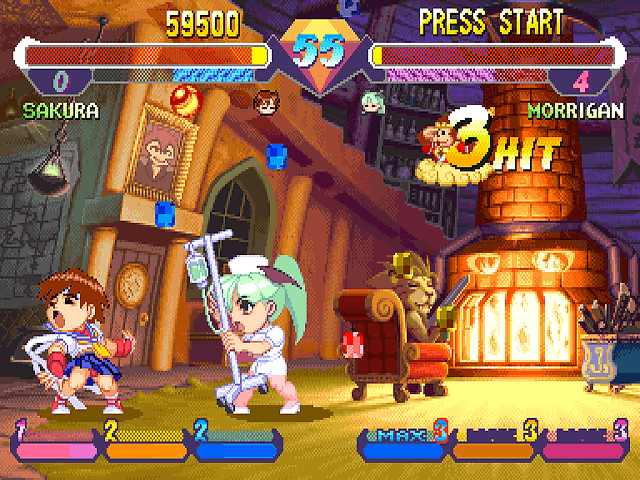
Street Fighter II was a watershed in gaming history, and few titles inspired more imitators. Capcom got a lot of mileage out of the game by releasing various updates and crossovers, and it was only a matter of time before they’d cash in with a parody. Capcom had previously used SD designs in Super Puzzle Fighter II Turbo, but Super Gem Fighter Mini Mix (known simply as Pocket Fighter in Japan) is a proper fighting game that’s obviously more in line with the games it was based on. The play mechanics from Gem Fighter borrow heavily from the Street Fighter series, but the roster also includes characters from Darkstalkers and an obscure guest from Red Earth. Elements from all of these games are used in Gem Fighter, and the addition of power gems add an element of randomness to each fight. The game only uses four buttons – one of which is reserved for taunting – but the multi-tiered combos make everything seem a lot more frenetic. I’m especially fond of the “costume combos” that allow characters to temporarily change their appearance. I’ll never get tired of seeing Chun-Li cosplaying as Jill Valentine, and Felicia is totally adorable when she puts on her Mega Man costume. Gem Fighter lacks the depth of most Capcom’s “serious” fighting games, but it’s worth checking out just for the adorable character designs.
3
Virtua Fighter Kids
1996
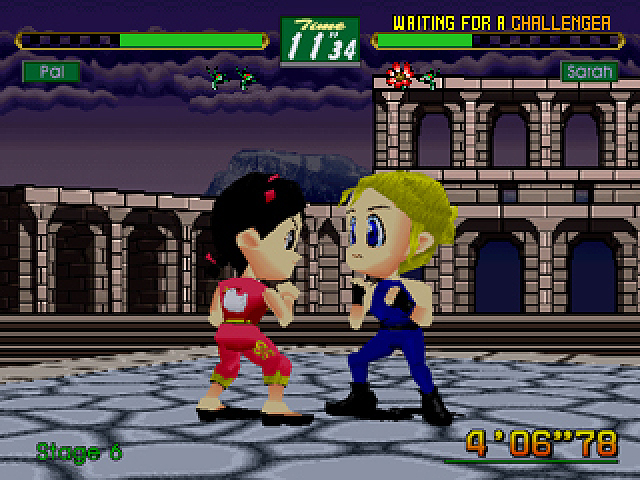
Virtua Fighter Kids is basically a modified version of Virtua Fighter 2 that gives all of characters tiny bodies and ridiculously large heads. The game’s title suggests that they’re children, but I’ve never seen kids with facial hair and full-on beards. In any regard, the art style is completely adorable. One of the game’s biggest selling points was the fact that characters could change their facial expressions. We take this sort of thing for granted nowadays, but it was pretty groundbreaking at the time. The characters in Virtua Fighter Kids seem much more lively than their Virtua Fighter 2 counterparts. In this capacity, Virtua Fighter Kids was used as a “proof of concept” for Virtua Fighter 3‘s facial animations. Despite its intentionally silly exterior, Virtua Fighter Kids still features the same precision-based gameplay that the series is known for. Even though the combat doesn’t feel as fluid as Virtua Fighter 2, the characters actually move quite a bit faster. The addition of a “combo maker” mode – which lets players create their own combos and save them to the Saturn’s memory – helps distinguish the game from other Virtua Fighter titles, but the game doesn’t exactly rewrite the rules on 3D fighting games. Regardless, you can’t really go wrong with this comical take on a winning formula.
2
Mighty Final Fight
1993
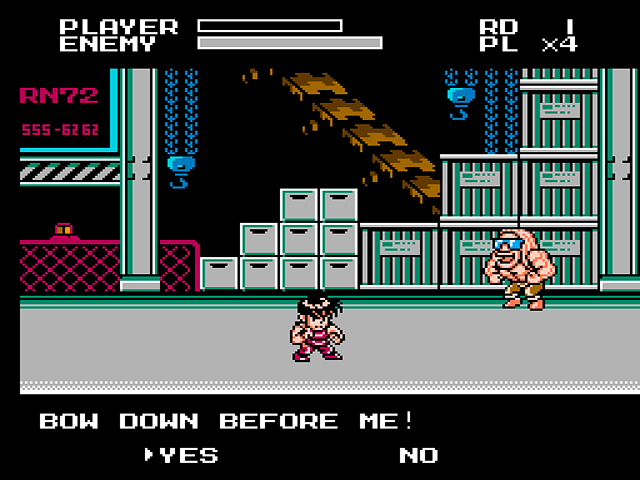
In the interest of full disclosure, one of the reasons I made this list in the first place is because I wanted an excuse to talk about Mighty Final Fight. The original version of Final Fight was an iconic arcade brawler that received numerous home ports, but the NES wasn’t nearly powerful to replicate Capcom’s CPS hardware. The 16-bit port had enough issues as it was, so Capcom took a different route with the NES version. Mighty Final Fight retold the story from the first game, but it featured super-deformed characters and a comical flare. Although it was strictly a single-player affair, it featured all three playable characters from the arcade game – which is more than I can say about the SNES version. Mighty Final Fight also introduced experience points and gave players the ability to learn new moves as they progressed, so it felt like a completely new experience rather than a watered-down version of something we’d already played. The citizens of Metro City are a lot more charming with their SD makeovers, and it’s a real hoot to see fun-sized versions of familiar characters like Mike Haggar and Poison. I’m not sure if Mighty Final Fight is a better game than the original, but no entry in the series has been more adorable.
1
SD Snatcher
1990
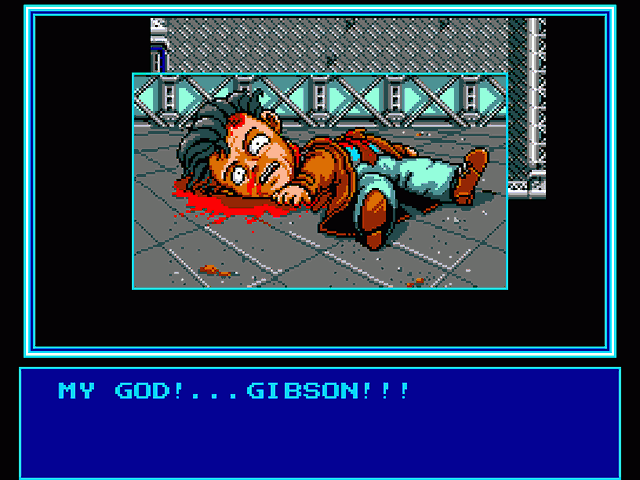
SD Snatcher is one of the oldest games on this list, but it still stands as one of the most absurd examples of an SD remake. Hideo Kojima’s Snatcher was well-known for its cinematic presentation and mature themes, so it wasn’t an obvious candidate for a chibi makeover. Even though the SD version tells the same story as the original game, it’s a lot more lighthearted since everything looks like a cartoon. SD Snatcher is effectively a remake, but it changes a lot more than the art style. While Snatcher was a landmark visual novel with a familiar menu-based interface, SD Snatcher is a typical JRPG with an overhead view and a turn-based battle system. In other words, it’s an entirely new experience. I had a lot of fun exploring the familiar cyberpunk environments, and it allowed me to view the post-apocalyptic landscape through a different lens. It’s a great compliment to the original game, and I’d also recommend it to those who haven’t played the original. If you’re intimidated by visual novels and prefer traditional play mechanics, than SD Snatcher is the game for you! Behind the childish veneer, you’ll find compelling characters, visceral action, and an intriguing story. Snatcher was one of the most provocative games of its era, and SD Snatcher is arguably even more fascinating. The original version was released on several Japanese computers and consoles, but the SD version was an MSX2 exclusive that has never been officially released outside of Japan. The English fan translation is missing a portion of the game’s script, but it’s still worth checking out.

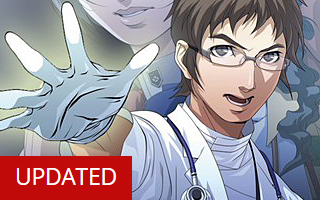
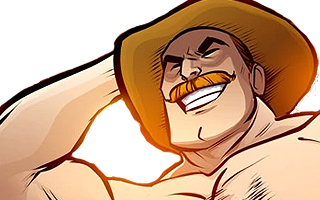
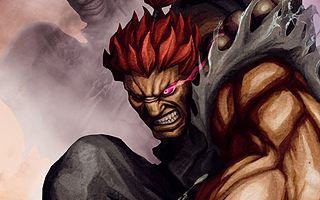
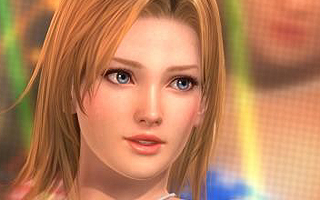
Do you agree with this list? Let us know what you think by leaving a comment below. Your opinion matters!